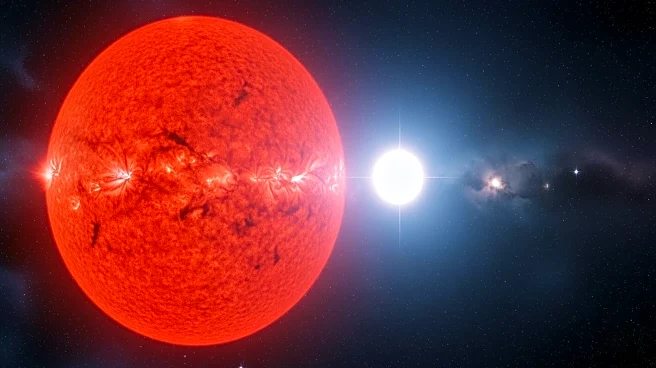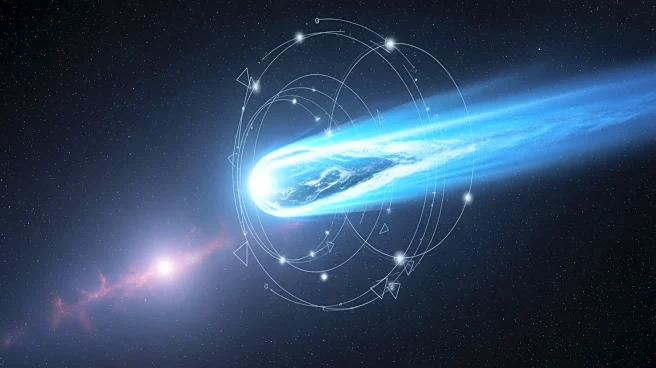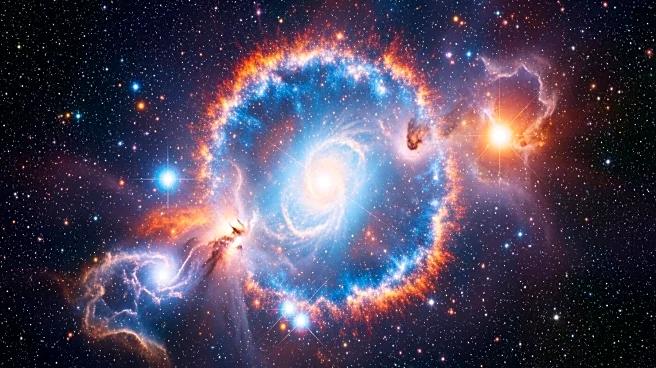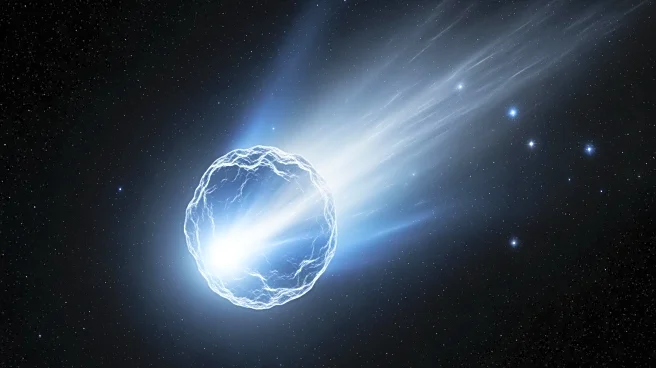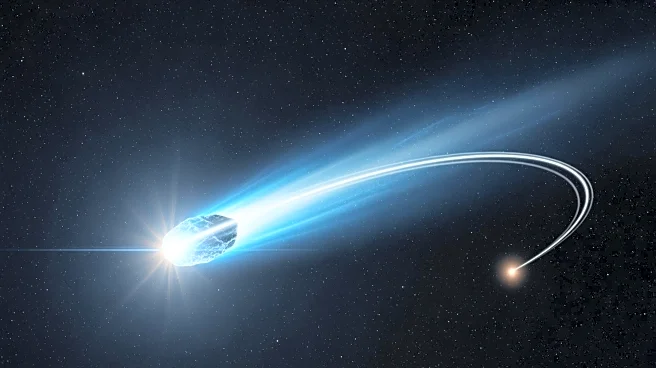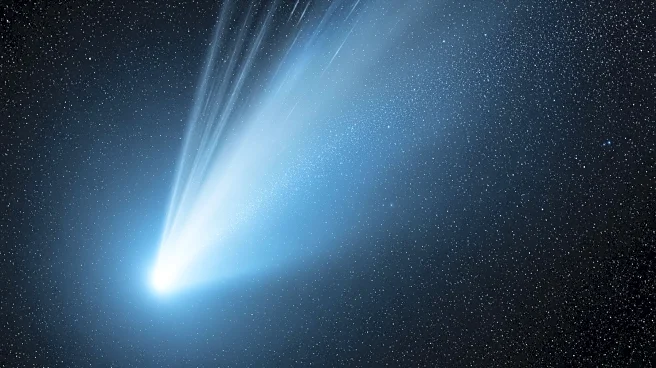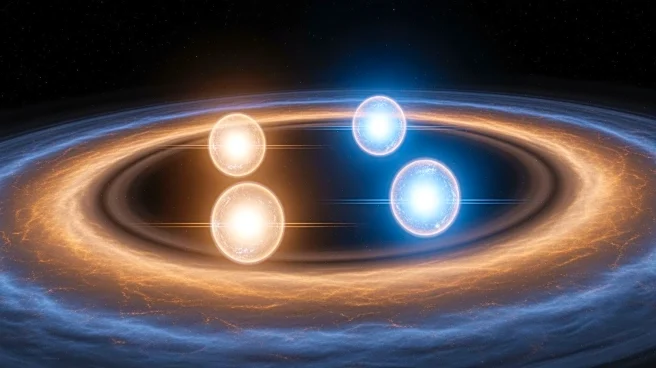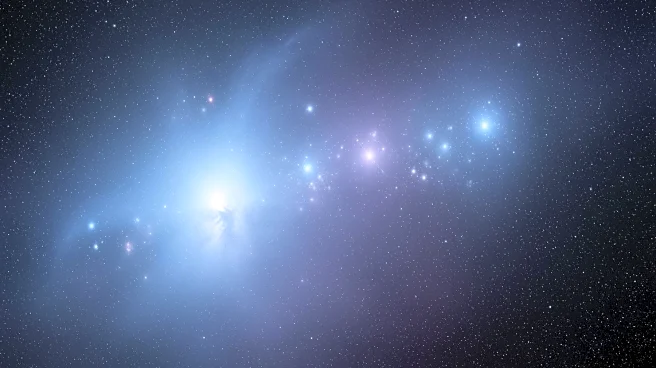What's Happening?
Astronomers have discovered a closely orbiting companion star to the red giant Pi Gruis, located about 530 light-years from Earth. Using the Atacama Large Millimeter/submillimeter Array (ALMA), researchers
found that the companion star's orbit is nearly perfectly circular, contrary to previous predictions of elliptical orbits for red giant companions. This discovery could necessitate revisions to current models of stellar evolution, particularly regarding the impact of companion stars on red giants during their asymptotic giant branch phase.
Why It's Important?
Understanding the behavior of companion stars around red giants is crucial for predicting the future of our solar system when the sun becomes a red giant. The discovery of a circular orbit challenges existing theories and suggests that companion stars may influence the evolution of red giants more significantly than previously thought. This research provides valuable insights into the complex processes surrounding red giants, potentially affecting models of stellar evolution and the fate of planetary systems.
What's Next?
Further research is needed to explore the implications of this discovery on stellar evolution models. Astronomers may conduct additional observations using ALMA and other telescopes to study similar systems and refine predictions about the interactions between red giants and their companions. These efforts could lead to a deeper understanding of the dynamics of stellar evolution and the future of planetary systems like ours.
